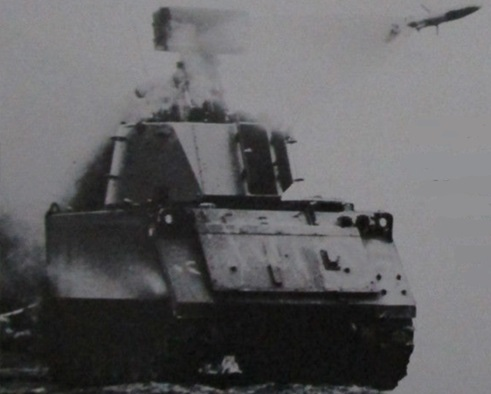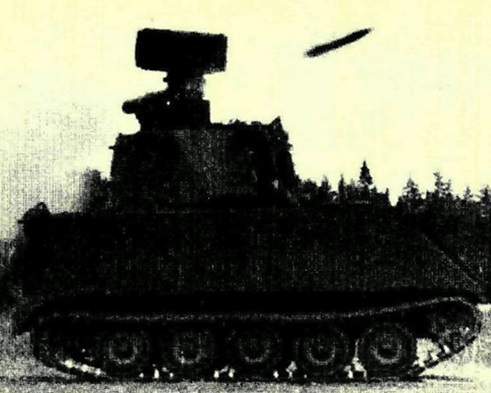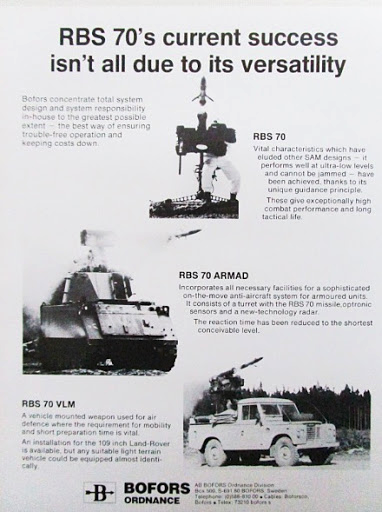So, since 1979, Bofors has been developing an ARMAD (Armored Unit Air Defense)combat module for converting light armored vehicles into a self-propelled air defense system. The system was a four-ton two-seat rotating turret with an RBS-70 missile launcher. , an optoelectronic system for tracking targets and guiding missiles with night vision devices, as well as a three-dimensional radar Ericsson HARD (Helicopter and Aircraft Radar Detection) with a stabilized antenna that allows you to fire on the move. The effective detection range of the VC was 12 km.
The original crew consisted of three people. The driver was in the control compartment, and the tower housed the module operator, who controlled the combat assets using a joystick-type manual manipulator, and the vehicle commander, who was also the radar operator. In the future, such a combination of duties was recognized as inappropriate and the tower became three-seater.
After detecting the target of the radar and capturing it for accompaniment by the optoelectronic guidance system, the tower and the rocket are automatically guided to a given point vertically and horizontally, respectively. At the same time, the missile defense system is sent to the TPK from the ammunition storage compartment to the launcher and is fixed on the rail. The operating time of the complex is four seconds, necessary for guidance, loading and receiving an automatic response from the target to the request of the "friend or foe" radar identification system. After firing the next ammunition, the spent launch tube is automatically released from the lock and flies off to the side under the action of the ejector, after which the guide is lowered into the tower, where the next missile is fed to the launcher by the automatic loader, which is fixed on the guide and moves up to the firing position.
The first field tests were carried out in April-August 1982. According to their results, Norway in December of the same year signed an agreement for the supply of a system for use on the M113A2 armored personnel carrier chassis with a planned delivery date in 1984.
And then the traces of this order are lost.
Then in 1986, ARMAD also participated in comparative tests on the kokurs to replace the withdrawn from service of the US Army with the Sergeant York ZSU . Its three competitors were the British Rapier air defense system , the Franco-German Roland II air defense system from the Euromissile consortium , the American-Swiss ADATS ZRAK from Martin Marietta with Oerlikon (which is typical, also with the RBS-70 SAM ) and the American Blazer ZRAK from General Electric . As a result, Roland II won , but it was never accepted into service.



